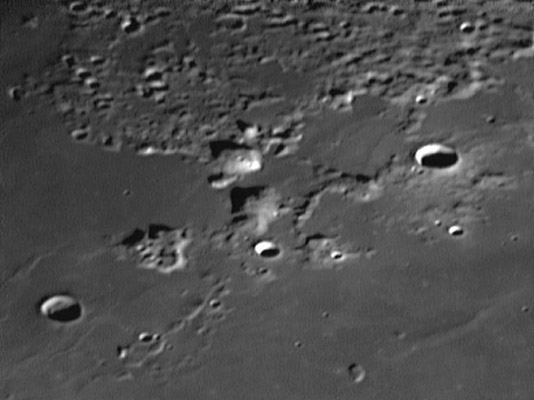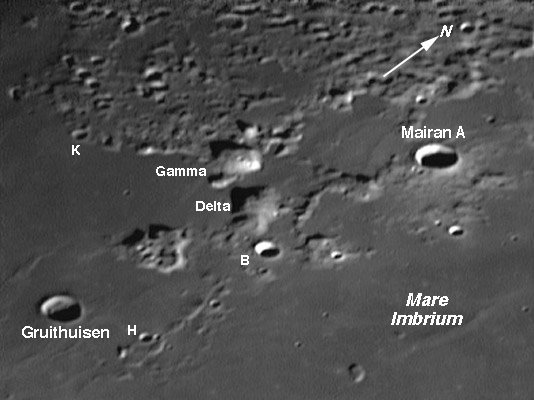March 30, 2004
Silicic Domes?
Image Credit: Tan Wei Leong |
|
Silicic Domes? Lunar volcanism was pervasive, producing mare lava flows and associated features such as sinuous rilles, pyroclastic deposits and domes. The magmas that made these features were basalts - melted mantle rocks rich in silica, oxygen, iron and magnesium. The latter two elements give basalts the dark color we see in the maria. Lunar scientists have hunted for other types of volcanic rocks, and these two domes near the crater Gruithuisen are the best known examples. Gruithuisen Gamma is about 20 km wide and 1200 m high; Gruithuisen Delta is 13 km wide and 1550 m high. Their steep sides suggest they were formed by more viscous lavas than normal mare domes such as those near Cauchy and Hortensius. Mathematical models of dome growth reaffirm this idea. On Earth, lavas with similar flow characteristics to the Gruithuisen domes are rhyolites, dacites and basaltic andesites - rocks with more silica and less iron and magnesium than basalts. If these lunar domes are made of silica-rich magma the next question is why? Technical Details: Related Links: Yesterday's LPOD: Hoover Dam (and Surroundings) Tomorrow's LPOD: Great Graben! |
|
Author & Editor: |
COMMENTS?
Register, Log in, and join in the comments.





